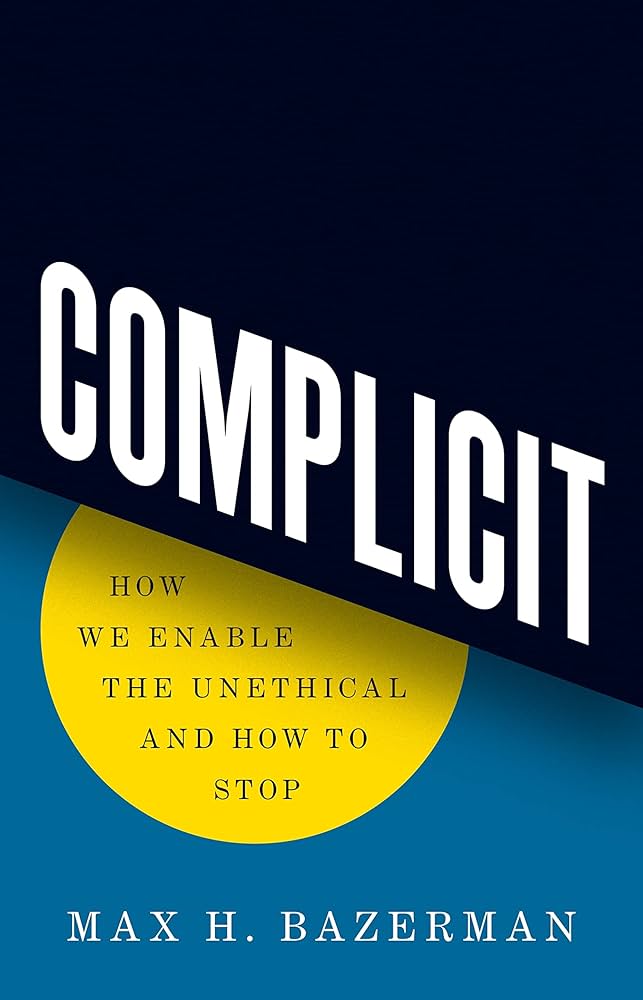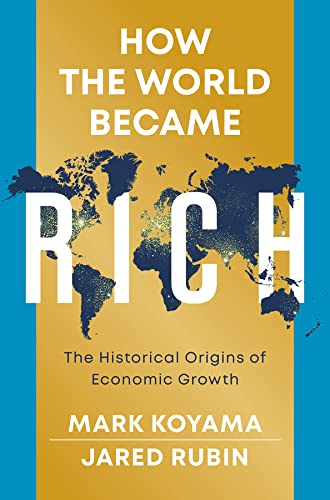
On the 24 February 1807, the House of Commons voted by 283 votes to 16 to end the trade in human slaves in all British territory. The principal opponent of the slave trade within Parliament and a leading figure in the diverse coalition of campaigners against the evil trade was a man named William Wilberforce. He worked closely with others building a broad coalition for the common good.
Wilberforce’s faith led him to campaign not only against slavery but also for wider moral reform of society and to his involvement in a range of organisations that are still going today.
In this publication (written for an April event with CCLA) Richard Turnbull introduces William Wilberforce.
A PDF is available here.

This article originally appeared at TheArticle
Sir Timothy Lankester has had a distinguished career of public service. He has served as Permanent Secretary at the Overseas Development Administration and the Department of Education; Director of the School of Oriental and African Studies; President of Corpus Christi College, Oxford; and Chairman of the Council, London School of Hygiene and Tropical Medicine. Inside Thatcher’s Monetarism Experiment (Policy Press, University of Bristol, 240 pp, £19.99) is about his time seconded as a member of the Administrative (not Government) Civil Service from H.M. Treasury to 10 Downing Street to serve as the Prime Minister’s Secretary for Economic Affairs, initially for James Callaghan (7 months) and then Margaret Thatcher (two and a half years).
The purpose of the book is to fill a gap in the economic history of the late 1970s and early 1980s and to show how Mrs Thatcher became infatuated with monetarism as an economic doctrine and implemented it as a laboratory experiment. However, this involved a vast cost of nearly one and a half million people becoming unemployed and thousands of firms going out of business. The author writes as a “disbelieving monetarist”: namely, someone who went along with monetarism because markets believed in it, even though he personally, in the best traditions of the UK Civil Service, did not.
While I am critical of Lankester’s understanding and assessment of monetarism, I thoroughly enjoyed reading the book. Its highlights are his relationship with the Prime Minister and colleagues, as well as his comments on the role and views of politicians, civil servants, special advisers, Bank of England officials, journalists, academic commentators and others.
He writes with admiration and affection for Mrs Thatcher, even though his view of the role and potential of government and the failures and imperfections of markets was very different from hers. “Mrs Thatcher and I got on well from day one,” is the way he describes his working relationship with the Prime Minister. He found her a kind and generous boss, including being invited regularly to the study for a drink in the early evening or supper in the flat with Dennis. He admired her in many ways, not least because, as he puts it, “she greatly valued those of us who worked most closely with her … there was a strong chemistry between us … the closeness of our relationship surprised me then and it surprises me to this day.” Yet he recognises that she had “a schizophrenic attitude to the Civil Service”, largely because of its ineffective delivery of services and its failure to get to grips with an increasingly bloated public sector.
The author makes clear that he approaches the subject with some personal history: he grew up in the lengthened shadow of the Great Depression, because his grandfather, a medical doctor, was forced to close his medical practice in 1930, leaving his father with no money to finish his schooling or attend university. In the Thatcher years, his wife’s family-run cotton textile manufacturing business in West Yorkshire was also forced to close.
This personal background and the great increase in unemployment from 1979 onwards leads him to a positively Augustinian confession: “Although only a minor player in this sad saga, I have always found it difficult to come to terms with the part I both wittingly and unwittingly played in it. … with hindsight, my admiration for her at a personal level, and my wish for her to succeed, made me work almost too hard on her behalf … I put to one side my reservations about monetarism and made myself see the world through her monetarist lens … I might have done more to push back on what Lawson would later call her ‘primitivist monetarism’ … this book is, in part, my attempt to achieve some kind of personal resolution.”
One issue which he addresses inadequately is why Mrs Thatcher, as someone proud of her training as a scientist, became so committed to the importance of monetary policy in controlling inflation. Her conviction was far from some beatific vision: it took the best part of a decade to develop.
When Mrs Thatcher became Prime Minister in May 1979, she inherited an economy described at the time as “the sick man of Europe” and suffering from “the British disease”: low productivity, high inflation, rising unemployment, stagflation, militant trade unions, strikes, and so on. The real pre-tax rate of return on trading assets in the UK manufacturing sector, which averaged around 10% in the 1960s, fell to 2.7% in 1974 and 1.9% in 1975; in textiles and metal manufacture, the real return was negative. Between 1974 and 1979, inflation averaged 16% annually, productivity was stagnant and the Government found it easier to borrow through the nationalised industries than on the Government’s own credit. The conventional Keynesian orthodoxy in terms of policy-making was also proving equally bankrupt: the long-run trade-off between unemployment and inflation had broken down; extra public spending or lower taxes could not be relied on to create more jobs; and a succession of incomes policies, voluntary and statutory, had proved ineffective in controlling inflation under previous Conservative and Labour governments.
After sitting around Edward Heath’s Cabinet table for four years, Mrs Thatcher had become convinced that if inflation was to be brought down, it needed some overall financial discipline. Subsequently, in 1976, while she was Leader of the Opposition, the IMF granted a loan to the UK (when it was effectively bust), but did so only on the condition that the Government would place ceilings on public sector borrowing and money supply growth (in the form of domestic credit expansion). In the academic world, distinguished scholars such as Hayek, Friedman, Johnson, Brunner, Walters and others had conducted extensive research which established that money supply growth affected prices in the long term, but in the short term, mainly output and employment. In addition, the explanation put forward by the Bundesbank and the Swiss National Bank to account for the success of their policies in controlling inflation was their control of money supply growth in their respective countries. All of this was in marked contrast to the part that money played in the intellectual approach of the UK Treasury, Bank of England and distinguished members of the then highly influential Cambridge University economics department.
The author deserves credit for recognising some of this, but then concludes with two observations: first, that the assumptions according to which monetarism should work were incorrect; and, second, that the cost of implementing the policy in increased unemployment was unacceptably high.
Lankester is certainly right to point out that the optimism of some of the early monetarists, myself included, was unfounded. Over the short term there was no systematic relationship between money supply growth and prices – the time lag was two years or longer. There were also differences of outcome when using different measures of the money supply. In addition, the regulatory environment in which monetary policy was conducted was constantly changing. Innovations such as the introduction of Competition and Credit Control, regulation by the “corset” and the abolition of exchange controls, made time series analysis difficult. However, the demand for money (the inverse of the velocity of circulation) has turned out to be stable over the longer term, such that central banks are able to control a measure of broad money which will affect prices after two year time lag. The best advice for a central bank is to aim for a steady growth of the money stock which is in line with the trend growth of money income.
The additional objection the author has to monetarism is its enormous cost in human suffering: namely, over 1 million jobs made redundant.
When she became Prime Minister in 1979, Mrs Thatcher made a point of honouring the pay settlements carried over from the “Winter of Discontent”, as well as the public sector pay awards recommended by the Clegg Commission, which the previous Government had instituted. Both were factors which inevitably led to some increase in unemployment, as was the new policy of switching revenues from high rates of income tax to a higher rate of VAT. However, over the next six years, unemployment in the UK continued to rise: from 6% to 12% of the labour force.
What is equally remarkable is that between 1980 and 1985 unemployment increased on average in all European Economic Community (EEC) countries — and by a large amount, from 5.8% to 11.2%. In Belgium, Italy and the Netherlands it rose above 12%. Even in Germany the unemployment rate more than doubled from 3.4% to 8.4%. Among the causes of this increase were the quadrupling of the oil price following the Iranian revolution and “sticky” real wages, because trade union bargaining power was strong, especially in public sector industries. But research has shown that fiscal tightening was not the cause. In other words, even without Mrs Thatcher’s policy revolution, executed by her Chancellor of the Exchequer Geoffrey Howe, unemployment would have risen significantly, if not doubled.
Lankester also acknowledges that research by Stephen Nickell and Jan van Ours had estimated that the “natural” rate of unemployment over these years for the UK — that is, the level at which the rate of inflation would remain stable, whether it was 0%, 2% or 10% — had risen from 3.8% (1969-73) to 7.5% (1974-89) and then to 9.5% (1981-86).
He concludes by recognising that there are positives from the growth of monetarism: that money does matter, in both analysis and policy, although we are not told how exactly that is so; that there is a “natural” rate of unemployment and so no sustainable trade-off between unemployment and inflation; that monetary policy is to be preferred to fiscal policy in the management of aggregate demand; and that unacceptable levels of unemployment must be tackled through micro-economic not macro-economic policies.
Should Mrs Thatcher have introduced an incomes policy which might have restrained wage increases over these years? Incomes policy had been introduced on numerous occasions since the early 1960s. The evidence from all incomes policies — whether introduced by Labour or Conservative governments and regardless of whether they were voluntary or statutory — is that they had no lasting impact on inflation. While they did initially lead to some wage restraint, this was subsequently undone, usually accompanied by strikes and industrial unrest.
Could the “British disease” of high inflation and high unemployment have been remedied without shock treatment? In principle, of course, it could — but in practice I very much doubt it. The most difficult challenge for the Thatcher Government in 1979-81 was to confront the economic malaise and the entrenched expectations of future inflation by trade unions, companies and the general public. This required a belief that the Government had a clear policy, that it would stick to the policy even though unemployment was rising, and that it would not change course. This it did. Its anti-inflationary policy was strengthened later by trade union reforms which reduced their power to disrupt the economy.
The irony of all this is that the 1981 Budget, which was roundly condemned by 364 economists because it put up taxes in order to reduce public borrowing (which was already greater than planned), actually marked the moment from which the UK economy recovered. It was a recovery that endured for the rest of the decade.
Sign up to receive blogs and book reviews via email

Brian Griffiths (Lord Griffiths of Fforestfach) is a Senior Research Fellow at Centre for Enterprise, Markets and Ethics (CEME) and Founding Chair of CEME (serving as Chair until 2023). Among other things he served at No. 10 Downing Street as head of the Prime Minister’s Policy Unit from 1985 to 1990 and Chair of the Centre for Policy Studies (CPS) from 1991 to 2001.
Photograph at top: Valentin Poleac; reproduced from Wikimedia Commons in accordance with a Creative Commons Attribution-Share Alike 4.0 International licence.

When someone like me from an older generation is confronted with a new piece of technology, inevitably we must turn to a younger person for help. What is described as ‘user friendly’ is usually so only to those who are already familiar with the ways of the machines. ‘Well, they have grown up with the new technology’ we say, by way of excuse. And that is true, but might it also be true that they have grown up, not only with, but also in competition with, the new technology? Consider the experience of infants in recent decades. They have learned from experience that their cries get the attention of parents, but at the same time they have found themselves in competition with mobile phones whose ring tones are set to call attention to themselves even against the background of considerable ambient noise, just like babies’ cries. And they have seen these gadgets lifted up to mothers’ cheeks, and those mothers looking attentively (lovingly?) at screens, just as the infants desired to be so regarded. Even in the most intimate moments of mothers’ quality time with their children, that third other is always present, and always likely to interrupt with its incessant demand for attention.
I am not trying to lay blame, to accuse mothers of harming their children (though here the notorious line from Philip Larkin’s poem might be quoted) but am simply asking what happens to people who learn how to be human, how to love and relate, in this context. What happens to children formed and raised in a milieu in which they must compete for attention, not with other children, but with mysterious talking and crying machines? What do they learn about priorities in relationships, about securing their own identity and interests and desires in this complex world? How is interpersonal communication fostered or frustrated when it is so structured by the mediating technology? This is the kind of question that arises when we consider AI in the context of common goods.
The consequences of the denial of face-to-face encounter of pupils with teachers and children with their peers, required by lockdown in response to Covid-19, are becoming evident. Teachers now observe the effects of this interruption to the normal processes of socialisation. Children lack the ordinary skills of social interaction, that they would formerly have been expected to bring to their school experience. But might it be the case that our reliance on gadgets for communication and socialising is also likely to have a negative impact on our culture because in some way draining it of the shared capabilities and skills and knowledge that makes a decent social existence possible? This question can be sharpened specifically in relation to Artificial Intelligence and its increased usage in various domains of social life. Is our common good at risk from AI and its applications? To deal with this question, we need to specify what is involved in our common goods, and how AI might jeopardise them.
Distinction of Common Goods
We can consider two cases of common goods, practical and perfective. The practical sense is that wherever people cooperate, they have a good in common, a common good. That good in common might be a private good (school places for our children), a club good (networks for alumni of our school), a collective good (any school’s ambition for its students), or a public good (high levels of educational attainment conditioning political discourse and respect for the rule of law). Perhaps the less obvious but more important way in which cooperation is for a common good is the perfective sense of good.
Again, taking schooling as an example, we can see how education as accomplishment of persons and communities, enables people to be more and to realise to a greater extent their human potential. What fulfils people is for their good, enabling them to flourish. Hence a perfective sense of the good is relevant, that might not be at the forefront of our thinking when we collaborate in some project. Then we focus on the task in hand, but our performance also shapes us and our relationships.
When considering the relationship between AI and common goods it is understandable that people would spontaneously begin with common goods in the practical sense of the objectives they hope to achieve by relying on AI. There is the project of reducing drudgery and repetitiveness in work, so that machines can do what humans have had to do. There are projects of increasing effectiveness and efficiency as more accurate analyses and diagnoses are made possible, factoring out the fallibility of human processes. There are ambitions of increasing fairness when the processing of vast quantities of paper such as application forms, whether for jobs, or for mortgages, or for credit, or university places, can be done without risk of human tiredness or boredom or prejudice distorting the process. The list goes on. Many worthwhile objectives can be pursued with the use of AI bringing accuracy, reliability, efficiency, and fairness to the undertaking.
But what about the perfective common goods at stake? What impact is the use of AI having or likely to have on the development of human persons, and on the quality of the relationships between persons who interact with one another mediated by the relevant technology? What is it doing or likely to do to community, to the quality of the cooperation itself that is in turn capable of being an instance of flourishing, a perfective realization of human potential? In various areas in which AI is currently being deployed we find questions being raised that touch on these perfective goods in common. These are still questions, but sufficiently concerning as to suggest that we cannot be indifferent to the possible answers.
One area of concern is that signalled by the potential of large language models that are so sophisticated they can produce very plausible and convincing text in several genres. ChatGPT developed by OpenAI fascinates with its ability to engage in a conversation with the user, answering questions and producing convincing answers. This can be very useful, but what is its impact on our understanding of what is going on in a conversation, or in written communication? If I no longer must assume that there is another human being collaborating with me in such interaction, does it impact on how I participate in communication when other persons are involved? If language is no longer exclusively a medium between people, do I then hear words differently when I’m aware they could be generated by a machine and not spoken by a person? If the voice I hear on the phone might not be that of a person, does that reinforce a tendency to treat the speaker in an instrumental way, whether a machine or not?
The absence of persons from relevant decision making when aided by AI is another concern. The superiority of AI aided medical diagnoses (because standardised based on large data inputs) over those made by physicians is well established. But patients are concerned about the implications for treatment when it is not another person, a physician with compassion as well as competence, making the decision. Similarly, when decisions about the granting of credit, or mortgages for house-buying, or jobs, are made by machines benefiting from analyses of large databases, the people whose applications are rejected can be upset that decisions with life changing consequences for them are taken by a machine and not another person. Even international human rights adjudication can now be facilitated by automated management of documentation. One might argue that the benefits of fairer and more reliable decisions outweigh the distress occasioned for some. But that is not the issue here. The issue is what we are doing to our common life, and to the willingness of people to collaborate, and comply, and accept the burdens along with the benefits of social cooperation, when machines and not human partners seem to be in control.
Among the willingness to accept burdens in social life is Losers’ Consent, the willingness to accept unfavourable outcomes of democratic decision making, a fundamental precondition for peaceful democracy. Is it also jeopardised by the undermining of social bonds occasioned by the replacement of human decisions makers with AI powered machines? Formation for human relationships and its reinforcement through social interaction is a perfective common good that is also a public good. Human capacities for bonding are formed and strengthened through daily encounters. Now we must face the possibility that those capacities are not reinforced but are instead jeopardised when our daily social encounters are increasingly with machines, and not with people. Have some of the infants who once competed with iPhones for a touch of mother’s cheek become adults who prefer to relate online?
Sign up to receive blogs and book reviews in your email

Dr Patrick Riordan, SJ, an Irish Jesuit, is Senior Fellow for Political Philosophy and Catholic Social Thought at Campion Hall, University of Oxford. Previously he taught political philosophy at Heythrop College, University of London. His 2017 book, Recovering Common Goods (Veritas, Dublin) was awarded the ‘Economy and Society’ prize by the Centesimus Annus Pro Pontifice Foundation in 2021. His most recent books are Human Dignity and Liberal Politics: Catholic Possibilities for the Common Good (Georgetown UP, 2023) and Connecting Ecologies: Integrating Responses to the Global Challenge (edited with Gavin Flood [Routledge, 2024]).

Are drugs like semaglutide a quick fix, or might they be opportunities to practise virtue?
Obesity is thought to affect over 800 million adults worldwide and according to the World Health Organisation, has tripled since 1975. Indeed, estimates are that half of the world’s population will be overweight or obese by 2035 and very few currently have access to long-term treatment to address obesity or the conditions that accompany it. However, the development of several drugs that deliver significant weight-loss have the potential to revolutionise treatment. Semaglutide, for example, better known by its brand name, Wegovy, brings about a reduction in weight of up to 15 per cent in recipients. Given the clinical advantages, not least in the treatment of obesity related conditions such as diabetes or kidney disease, it has been approved for use within the National Health Service, where, in spite of soaring demand, it is prioritised for use by high-risk patients who need to lose weight prior to receiving surgery for cancer or organ transplants. Owing to the potential success of such drugs, pharmaceutical companies are keen find a share of a market that some recent reports estimate will be worth approximately $100 billion, or perhaps $200 billion, by 2030.
Some might argue that since, in most cases, obesity is caused by poor diet and lack of exercise, it a consequence of a failure of self-restraint on the part of the individual. It therefore constitutes a problem of willpower and should be treated as such. However, it can plausibly be argued that the emergence of drugs such as semaglutide, far from being a ‘quick fix’ for those who have failed to take responsibility for their own well-being, in fact represent an opportunity to practise virtues such as temperance.
Virtue Theory and the Question of Character
To adopt the language of the virtue ethics tradition, obesity can be seen as a failure of the virtue of temperance. As a virtue, temperance is recognised by both the ancient Greek philosopher Aristotle and the mediaeval theologian and philosopher St Thomas Aquinas, with Aristotle characteristically identifying it as an ‘excellence’ of character that lies between two vices: the deficiency of insensibility and the excess of self-indulgence. For neither Aquinas nor Aristotle is temperance a virtue that relates purely to the consumption of food and drink. Like the other virtues, it rests on the capacity to correctly apprehend one’s situation and respond appropriately. In Aquinas’ terms, this would mean being informed by ‘right reason’ and having a grasp of the truth. As such, temperance – sometimes better understood by the term ‘moderation’ – is a trait of character that pertains to various areas of life. For instance, it might be applied to the emotions, with the suggestion that someone should temper his anger (which of course is not to say that he shouldn’t ever be angry, but only that in the given situation, his anger is excessive). Temperance, then, helps to produce order and balance – and in connection with the body, this means health. In failing to grasp the truth of his situation, with regard to the order of goods (such as physical health, spiritual wellbeing, food and pleasure) or their respective value, the subject falls into self-indulgence. He fails to control or moderate his natural desires – for food or pleasure, in this case – and his well-being is sacrificed to transient goods. This outlook also reflects the wider teaching of Scripture on avoiding excess, developing character and personal responsibility. From such a perspective, then, one might argue that obesity is indeed a moral problem, or, rather, a problem of character, and must be addressed accordingly, with guidance, education and self-discipline.
Drugs as an Opportunity for Responsibility
This might very well be true in many cases, but it is not clear that the existence of weight-loss drugs does in fact undercut the exercise and training of virtue. Might it rather be the case that such treatments represent an opportunity to exercise moderation in a way that the subject has found impossible of late, his situation having become chronic and his attitude having degenerated into hopelessness? By way of comparison, one might say that smoking can be overcome by willpower alone – and for some people it can. For those who are heavily addicted to nicotine, however, and have been smokers for some thirty years, perhaps this is to expect too much. Nicotine patches, nicotine gum and e-cigarettes are, for some, a necessary aid to enable them to overcome their habit and, hopefully, to give up smoking for good, the idea being that they eventually rely on their own willpower. Obesity resulting from lack of exercise and excess calorie consumption is arguably different with regard to the question of physical addiction – and the cost of weight-loss drugs is far higher than that of e-cigarettes – but a similar principle can still be said to apply: at some point, the patient must rely on strength of will. Indeed, the nature of such treatments suggests as much. They are not to be taken forever; rather, they reduce weight to a certain point, after which it is for the individual to take responsibility. One of the major benefits reported by those researching the effects of the drug orforglipron (a tablet often known as Alii or Xenical) was that once they had lost a certain amount of weight, patients changed the way they thought about food and found that they were no longer constantly feeling hunger or thinking about it. What is this but an opportunity to begin to exercise temperance in a manner that had become impossible?
While there will remain questions about the desirability, costs and effects of an obesity market, it would appear that such a market is not of itself necessarily inimical to the exercise of the self-restraint that is so often central to maintaining health. Based on the indications of what certain treatments can achieve, it might well be the case that the development of weight-loss drugs provides some individuals with the means not only of avoiding some of the worst effects of obesity on their health, but, with judicious use, to regain the responsibility and personal agency which had become difficult for them.

Neil Jordan is Senior Editor at the Centre for Enterprise, Markets and Ethics. For more information about Neil please click here.

Adam Smith’s virtue ethics is of enduring relevance within contemporary business and societal discourse, also in the realm of e-commerce. Despite the widespread recognition of Smith’s contributions to economic theory and business ethics, there has been a gap in the exploration of Smith’s virtue ethics in the context of modern societal and technological advancements, such as digitalization. Smith’s virtue theory, particularly his emphasis on prudence, offers valuable insights for understanding and evaluating ethical behaviors also in e-commerce. Prudence, as articulated by Smith, serves as a foundational virtue that directs self-interested passions toward the preservation of wealth, health, rank, and reputation. In the commercial society envisioned by Smith, prudence generates attitudes like industry, frugality, parsimony, and thrift, essential for capital accumulation through saving. Alongside his contributions to economic theory, contemporary scholarship positions Smith as a virtue ethicist, highlighting his focus on virtues of character rather than prescriptive moral rules. In this sense, Smith portrays praiseworthy characters and their qualities, both in The Theory of Moral Sentiments and The Wealth of Nations. Prudence plays a role over and above other virtues in Smith’s moral framework, because prudence plays a pivotal role in regulating self-interest, especially in economic activities. While justice is crucial in Smith’s philosophy, he sees justice as a negative virtue primarily concerned with avoiding harm, whereas prudence is the virtue guiding decision-making and ethical reasoning. Smith’s concept of prudence, in contrast to justice, fosters economic activity and societal flourishing and, as a moral and economic virtue, regulates self-interest within the framework of a just society. Smith’s virtue of prudence, as expounded in his works, has garnered significant attention from scholars in recent years.
When we apply Smith’s virtue ethics to the contemporary context of e-commerce, we can make the Scottish Enlightenment thinker’s notion of prudence fruitful for guiding ethical behaviors among buyers and sellers in digital transactions. E-commerce, with its unique features and global reach, creates new forms of societal interaction that can benefit from Smith’s ethical principles. Just as Smith updated classical virtue ethics in the context of his commercial society, we can do the same to Smith’s notions in contemporary e-commercial society. Smith’s approach to prudence diverges from classical Christian ethics, where it is the central moral virtue regulating all aspects of life. Instead, Smith focuses on its role in regulating selfish passions and bodily desires within the bounds of health and fortune. While classical ethics emphasizes prudence as the charioteer of all virtues, guiding actions towards a proper end, Smith confines its scope to sentiments necessary for one’s good standing in a commercial society.
In portraying the prudent person, Smith emphasizes traits such as security-seeking, genuineness, and moderation in speech and social interactions. The prudent individual avoids unnecessary risks, values truthfulness, and maintains decorum in society. This depiction aligns with Smith’s belief in the importance of reputation and propriety in fostering social cohesion. Moreover, Smith discusses the impact of prudence on business activities, advocating for steady industry, frugality, and foresight in decision-making. Prudence, for Smith, involves sacrificing present desires for future interests and entails a careful balance between present enjoyment and long-term security. Smith’s conception of prudence extends into his economic theory as well. In The Wealth of Nations, he emphasizes the importance of saving, investment, and frugality in fostering economic growth and social progress. Prudent management of capital, Smith argues, leads to increased productivity, employment, and specialization, benefiting society. Smith’s advocacy for prudence in both moral and economic spheres reflects his belief in the interconnectedness of individual and societal well-being. While prudence serves the self-interest of individuals, it also contributes to the common good by fostering economic prosperity and social harmony. Smith’s theory was written for different times and circumstances. We thus need to acknowledge his limitations in addressing modern challenges. Nevertheless, we can judiciously apply his ideas to understand the dynamics of e-commerce.
The landscape of e-commerce is evolving, both in its technical capabilities and societal impacts. In business research technical aspects are widely explored, whereas ethical considerations tend to be underrepresented. Smith can supply some conceptual tools to help navigate the uncharted ethical waters of e-commerce.
We propose two propositions that link Smith’s detailed traits for prudent commercial activity with e-commerce. We also introduce two propositions elucidating how prudent e-commerce influences societal well-being. Smith breaks down the virtue of prudence into the following traits of the prudent person: balance, steadiness, sacrifice, living on current income, self-command. Applying these traits to e-commercial activity, we discover that e-commerce platforms can either foster prudence or reinforce vices, depending on users’ pre-existing moral dispositions.
The two propositions thus are:
Security, genuineness, moderation in speech, friendship, and observance of decency are explored as traits that positively impact societal well-being when cultivated by e-commerce users. Conversely, neglecting these traits can hinder societal flourishing. Two additional propositions (B1 and B2) summarize these insights, affirming that cultivating Smithian traits in e-commerce supports societal flourishing, while neglecting them detracts from it.
Practically speaking, the study of Smith’s concept of prudence in e-commerce would advocate the integration of virtue ethics education into business curricula and emphasize the importance of ethical considerations beyond those concerned with legal compliance.

Professor Msgr. Martin Schlag is the Alan W. Moss Chair in Catholic Social Thought and the Director of the John A. Ryan Institute for Catholic Social Thought at the University of St. Thomas

In Faith in Markets, Benedikt Koehler (PhD), a fellow of the Institute of Economic Affairs, has brought together a series articles that consider the ways in which Christianity, Judaism and Islam have encouraged adherents ‘towards behaviours that tended to market economics’ (page 7). The collection discusses the three major Abrahamic faiths and also a contains a chapter looking at eastern religious traditions more broadly, but the focus in this review is on the Judaeo-Christian tradition specifically. The first part of the book considers the mutual influences of religious practice or belief and the market, with three of the chapters in this section being written by the volume editor himself. One of these shows how the teaching of Moses revolutionised the economic behaviour of the Israelites and was unique in basing economic norms on theology. Extending the Sabbath principle to economic life, together with a ban on usury, Moses implemented what amounted to an egalitarian approach to commerce and a de facto system of welfare. Of particular interest in this part of the book was Koehler’s chapter addressing the development of property rights in early and mediaeval Christianity. This piece provides a fascinating overview of the dispute between the Franciscans and the Papacy on the subject of ownership, showing how Pope John XXII established a view, supported by scripture, that grounded property rights in the divine will, independent of and prior to any rights granted by the state – a view which contrasted with the earlier tendency among both pagan and Christian thinkers to link property rights with human convention. Esa Mangeloja and Tomi Ovaska continue the examination of Christian thought in their discussion of the common-property-based economic and political system of Thomas More’s Utopia, showing that the work is in fact full of economic concepts and that Utopia lends itself to a proper analysis in economic terms, just like other economic systems.
The second part of the book consists of chapters that highlight difficulties or paradoxes in the teaching of each of the Abrahamic faiths as they interpret or apply ancient authorities and again, my focus is on the Judaeo-Christian context. David Conway’s contribution examines the manner in which, by rigidly applying the provisions of the Pentateuch regarding poor relief and education, Israel’s ultra-orthodox communities (Haredim) have created an unsustainable welfare burden for the state. This is the result of low labour market participation caused in part by publicly funded specialist schooling, in which men engage in near-perpetual religious study while ordinarily core subjects such as mathematics are not taught – thus exacerbating the employment problem. This arrangement is traced to the requirement in the Hebrew scriptures that those without means be provided for and that the Levites be supported by a tithe in return for their provision of education in national history and divinely mandated law. As honoured in contemporary Israel, however, these obligations place a huge strain on the public finances and ignore the spirit of the original laws themselves, which favoured economic activity, required recipients of poor relief to work where possible and sought to restore those who had fallen on hard times to economic independence and liberty as soon as possible.
In a very engaging chapter, Martin Rhonheimer considers the subject of social justice, beginning with the modern tendency to use this concept in the criticism of inequalities of wealth. The author agrees with F.A. Hayek, that the notion of ‘justice’ makes no sense when applied to the outcomes of economic systems because they are simply outcomes of a particular order and are not aimed at by any individual or group. However, he adds that it does make sense to talk about the systems themselves as just or unjust, insofar as they are devised or at least allowed to persist by human beings. In short, if the rules of the system are unjust – for instance by discriminating against a particular group such that that group cannot engage in economic activity on equitable terms – then we can change the rules in the interests of fairness. Moreover, we quite legitimately use the term ‘just’ in relation to freely acting individuals, insofar as their actions have some positive bearing on society. Rhonheimer’s point is that ‘social justice’ refers to the social or common good, and we would consider businesses, charities and voluntary organisations who contribute to this as being involved in the exercise of social justice as virtue. Thus, while the term ‘social justice’ might have no purchase in distributive terms (with reference to ‘outcomes’), it certainly can be applied to economic orders, organisations and individuals – and it is here that the tension in Christian thought emerges. Rhonheimer contends that the teaching of the Catholic Church has moved away from an understanding of social justice that is broadly compatible with this perspective, towards a view that is closer to the contemporary ‘distributive’ attitude. As such, it has in recent decades become more inclined to favour redistributive social policies and seems less inclined to take account of the very real benefits of a market economy in contributing to the common good. Thus, the Church’s traditional teaching recognised social justice as a moral virtue from which actions conducive to the common good flow, but we must now wonder how easily this sits with its increasingly ‘(re-)distributivist’ view of ‘social justice’ and the statism that this implies.
Overall, this collection contains several interesting studies and for the most part, the writing is very accessible, though some chapters – such as that considering Utopia – would require a degree of prior knowledge in order for the reader to fully appreciate the proffered analysis. More difficult is identifying a general argument or unifying narrative that runs through the book. The individual chapters have previously appeared in the journal Economic Affairs and some reflect the brevity of the article format, but more significant is the overall feeling that they have not been entirely integrated so as to compose a single, unified volume. As can be the way with edited collections, while each chapter is interesting, the book as a whole lacks a clear sense of overall purpose to pull the individual studies together. Perhaps, however, given the subject, this would be to ask too much in this case. Since it deals with three of the world’s largest religions and is not limited to a particular historical period or geographical region, it would be impossible to give more than a series of studies demonstrating different ways in which the Abrahamic faiths have steered their adherents towards practices that tend to market-oriented behaviours and outlooks. A unified account that shows how this occurred frequently and consistently over the centuries would require a much longer book – most likely in several volumes.
While perhaps lacking a sustained argument to bring the entire book together, as a collection that provides thematically organised snapshots of certain strains of thought and practice within major faiths, while considering tensions that have arisen in relation to market principles, this volume will appeal to those with interests in the overlap between religious and economic thought and practice.
‘Faith in Markets: Abrahamic religions and economics’, edited by Benedikt Koehler, was published in 2023 by the Institute for Economic Affairs (ISBN: 978-0-255-36824-7). 240pp
Neil Jordan is Senior Editor at the Centre for Enterprise, Markets and Ethics. For more information about Neil please click here.

Written by Harvard Business School professor Max Bazerman, Complicit: How We Enable the Unethical and How to Stop is published by Princeton University Press and features glowing praise from notables such as Cass Sunstein and Steven Pinker. Given this background, one expects a far different book than the one that it is.
The basic idea of the book is that when people think about the cause of unethical actions, they often fail to consider the many people who enabled the actions through various degrees of complicity. Relatedly, those who enable bad actors don’t think about their own role and the aggregate role of others in similar positions. At the outset, Bazerman claims, “In contrast to past accounts of these stories, Complicit will focus on the overlooked importance of others who were complicit in the bad behaviour.” (page 6) This is a sensible perspective, and one that I hoped would be investigated with sensitivity and precision. However, the book deals with an interesting ethical topic in a way that staggers in both senses of the word.
The book consists of 11 chapters divided into three sections. After an introductory chapter, the first seven chapters present readers with profiles of complicit actors arranged by the type of complicity. Bazerman begins the book with two chapters on those who are most clearly complicit in extremely unethical acts (“true partners” and “collaborators”). As the book progresses through the second section, the degree of complicity declines with five chapters on “those who benefit from privilege, those who are true believers, those who defer to authority and loyalty, those who rely on their trust of others, and those who create and accept unethical systems” (page 12). The final section has one chapter on the psychology of complicity (though this is also covered in some of the chapters) before ending with two applied chapters: one on dealing with complicity on a personal level and another on developing institutional strategies to prevent complicity.
The march through the case studies might have worked if the case studies weren’t as high-profile and there were more of a focus on each example. Or, perhaps, if they were interspersed with the potential methods to stop a particular type of complicity shown in an example. Instead, the reader is left lurching as the author discusses, among others: Hitler, Trump (my worries began when the two were separated by seven words and a semi-colon in the introduction), the Sacklers, Weinstein, Elizabeth Holmes and Adam Neumann, along with many somewhat lesser-known figures. There is great range in the type of misdeed committed and the types of complicity that enabled the misdeed. The institutions in which these figures operated, and the incentives faced by those surrounding them varied considerably as well. Despite the often-enthralling stories presented, the reader is left adrift without much real explanation or robust ideas about how to stop complicity.
Much of the book is written in a way that suggests genuine concern with the misdeeds presented in the case studies and the various degrees of complicity that enabled them. This is often good, but in some cases, like the chapter “Benefiting from Privilege,” it reads like an older colleague trying to signal his ability to adjust to a changing landscape. This is part of a broader identity crisis for the book, which covers a lot but explains little about each of the wide range of ways that complicity can present itself in different contexts.
I held out hope for more specifics to be dealt with in the final chapters (pages 157–216) but was for the most part disappointed. These chapters dealing with the theoretical explanations for complicity and tangible steps that one can take to reduce it are themselves as meandering and full of journalistic anecdotes as the earlier chapters. After another bizarre introduction about Hitler and Trump, the first chapter of this final section of the book suggests it will elaborate on the psychological reasons for complicity. While it offers some detail and academic research, the things offered as explanations include the perceived differences between commission and omission, fear of retaliation, and a slippery slope of smaller misdeeds slowly escalating. These basic explanations might be sufficient had they been pursued in some depth, but they are dealt with cursorily. The following chapter offers some more tangible insights into strategies at the individual level for stopping complicity (reducing the risks to speaking up, deliberating more in advance, recognizing blind spots, and enlarging our circle of concern). But here again, the second part of the chapter is padded out with profiles of whistleblowers and others who actively overcame the tendency to become complicit. The final and perhaps most interesting chapter looks at the structural reasons for complicity and organizational tactics for preventing it.
Despite the weaknesses of the book, there are sections that are of real interest. Besides the most famous and compelling stories of Theranos and Purdue Pharma, the comparatively less well-known examples from later in the book may offer more relevant examples for readers. For instance, it is interesting to learn about the level of complicity involved in the Volkswagen emissions testing scandal, where senior members of the regional German government and trade unions were aware of the fraud but overwhelmed by their interests.
Separately, Bazerman’s personal role in the still ongoing scandals in psychology and behavioural economics where researchers such as Dan Ariely managed to secure global fame and permanent positions at top universities with research that is now clearly discredited in some cases because of outright data fraud. The personal email correspondence with his fellow coauthors (including Ariely) that Bazerman reproduces offer a new and interesting look at the topic. But even here he steers clear of the more interesting questions about the broader institutional context of the academy.
The most interesting parts of the book are those that deal with complicity encouraged by systems and relatedly institutional solutions to complicity. Part of Chapter 8 deals with the compelling topic of goal setting in organizations namely how explicit goals can overwhelm more tacit ethical standards and how conflicts of interest can create ripe situations for complicity. In some situations, the systemic problems were intentionally created, but in many of these scenarios, they only occurred because of accidental confluences of interests rather than conspiracy. Both are of interest and ripe for hard thinking about solutions. The most thoughtful solutions are offered in Chapter 11, but I came away thinking that the viability of any institutional solution requires a specificity that couldn’t be achieved by the scattershot approach of the book.
Sadly, even the more useful and relevant aspects of the book are drowned out by the repeated and sustained focus on lighting rods. A search of the text reveals that variations of “Trump” appear in the main text of the book nearly as much as any variation of “complicit.” “Nazi” appears 26 times. Even beyond this, after all the pages over which Bazerman has journalistically recounted the many, many examples of complicity, there is bizarrely little sustained explanation or ideas for how to structure organizations to prevent complicity. Readers should not seek out Complicit.
“Complicit: How We Enable the Unethical and How to Stop” by Max Bazerman was published in 2023 (UK) by Princeton University Press (ISBN: 978-0691236544) 264 pp.

Promising to loosen the constraints of the planning system on developers and reignite economic growth, Labour leader Keir Starmer sounded in parts of his speech to his party conference like he was the leader of the other party. While much of Europe is shifting to the right, the conservative party is trailing in polls by a wide margin after 13 years in power. This makes the change within Labour since the last election all the more interesting.
Increased Attention on Growth in a Low Growth Environment
The UK has had perennially low levels of growth after the financial crisis. A litany of additional shocks has not helped and the growth outlook is not improving. In fact, on the day of Starmer’s speech, the IMF projected that the UK will have the lowest growth rate of the G7 in 2024. The economic situation is bad in many other countries in Europe which have generally diverged from US. They are growing at lower rates and starting at lower levels of GDP per capita. The best performing western European country, Germany, is facing its own problems. While many European states are in the running for the title, in her speech earlier in the week, the Shadow Chancellor referred to the UK as the “sick man of Europe.”
Supply-Side on the Left
These speeches and the turn in Labour policy come on the back of a renewed explicit focus on economic growth from conservative leaders perhaps starting with the leadership campaigns to replace Boris Johnson. The ideology likely to be adopted by Labour in the next election and therefore by the next government is one of supply-side progressivism—an ideology that I blogged about as it was emerging a few years ago and noted was gaining steam on the left.
In The Economist, Duncan Robinson captures this view:
This version of supply-side economics fuses tools and rhetoric conventionally associated with the free-market right—deregulation and creative destruction—with the left’s emphasis on industrial subsidies, labour rights and public services. It stresses an abundance of infrastructure, energy and housing, as well as stable government to drive investment.
Centrality of the Planning System
It is of note that more focus is on the basics of economic growth delivering policies rather than the loftier (and more dubious) claims of both Levelling Up and Net Zero. Regional disparities and a state-led transition to a new, greener economy were still discussed, but most of the attention was correctly on the planning system. It is the planning system and related drawn-out, costly processes for getting things built that interacts with both political goals mentioned. The planning system bogs down and raise the costs of the improvements to transit infrastructure that form a key part of Levelling Up. It is also the planning system that bogs down the generation and transmission infrastructure clearly needed to achieve Net Zero. Perhaps most importantly it is the planning system that prevents housing from being built in the places with economic opportunity where it is most needed (a statement that the leader himself disputed a few years ago).
Political Constraints
Labour leaders themselves have noted that these goals are often shared with Tories who have failed to deliver the policies that they announce due to political constraints. On some of these issues it is unclear how the Labour will differ. The Times drily notes that “supply-side reforms look good, but politics may get in the way.”
Differences in their political coalitions may make it easier for Labour to achieve some greenfield building that Tories wouldn’t be able to. Like with the Cambridge plan announced by Michael Gove, there are sound economic and political reasons for concentrating developments. Labour has also suggested design codes with gentle density to both concentrate development and reduce opposition. More detail is needed to know the chances of meaningful reform, but the cross-party consensus on these important reforms is reassuring.
Deteriorating Fiscal Situation
Despite an interest in growth there are many headwinds facing any government. The strained fiscal climate will have no easy remedy as growth will take time. Taxes are already high, and changing demographics will worsen the strain on existing services. The continuing deterioration of the NHS and local councils will only receive more attention. Furthermore, the rise in real interest rates has driven borrowing costs up on high levels of accumulated debt. In the wake of the historic failure of the previous leader who pushed for growth, it is worth noting that both the shadow chancellor and Labour leader are stressing fiscal prudence. They fear bond markets in a way that we know at least one prime minister didn’t.
 John Kroencke is a Senior Research Fellow at the Centre for Enterprise, Markets and Ethics. For more information about John please click here.
John Kroencke is a Senior Research Fellow at the Centre for Enterprise, Markets and Ethics. For more information about John please click here.

Michael Gove, the Secretary of State for Levelling Up, Housing and Communities, gave a speech on 24 July where he outlined a variety of policies that the government is pursuing to address the fact that too few homes are being built in the places that most need them. This problem impacts housing costs most directly, of course, but is also clearly related to more general problems in the UK. Supply restrictions are most binding in the most economically successful places. Unsurprisingly then, London receives the most attention in UK policy spheres, but right behind it are Oxford and Cambridge. The aspect of Gove’s speech that has (deservedly) received the most attention is his “Cambridge Quarter.”
It is clear that the highest productivity areas of the country offer the most economically important areas for reforms. It is also somewhat clear that these benefits are not geographically zero-sum (i.e. the marginal resident of Cambridge creates more value because they are in Cambridge) and can also benefit other regions through the tax system. But what I want to do in this blog post is suggest that by the very nature of how concentrated it is the “Cambridge Quarter” may also offer a successful strategy for delivering reforms going forward for both this government and the potential Labour government.
Dense Urban Extensions Are Nothing New
First, let me explain the basics of the idea to look to the past (something that may sound simply nostalgic). In his speech, the minister suggests that the urban extension will consist of 250,000 houses and be informed by architectural and urban history. The UK has a great history of urban expansion and densification. In the nineteenth century, the population of the industrial powerhouses in the Midlands and North grew dramatically. London was no small town in 1800 (it numbered 1 million); after a century of decades where the population grew around 20 percent per year, it grew to 6.5 million by 1900. In my own research on the great estates of London, I have looked at how the burgeoning middle class was accommodated in terraced houses and later in mansion blocks and midrise buildings with purpose-built flats.
In these parts of London as in other planned developments for the middle class in parts of Bath and New Town Edinburgh, simply looking at the relatively population density achieved by the builders gives a poor impression of the feel. Mid-rise terraces and later mansion blocks closely grouped together and punctuated by green spaces like squares and crescents do not feel like Kowloon Walled City. Rather, they are the green and welcoming urban environments that many tourists from across the world flock to explore and even aspire to live in. Beyond the UK, Gove mentions the planned parts of Paris and Barcelona in his speech, but even the more unimaginative urban extensions from cities across the world, from Chicago to Amsterdam to Melbourne, achieve dense and agreeable results (especially when renovated by residents with modern incomes and technology!).
Cambridge Should Have Grown More, But Political Reforms Have Proven Difficult
Why didn’t this happen in Cambridge? Cambridge is an example of a place that would have expanded dramatically had the rules surrounding development been different in the last few decades. Research clusters in the sciences and related industries, in particular, have grown dramatically, but they are constrained by the inability to build both lab space and homes for researchers imposed by the political situation through the planning system. This limits the growth of the industry obviously, but it also drives the housing costs for all near these clusters ever higher as those with the best jobs compete for the scarce homes. It is not just the prospective workers who suffer, but also the children of local residents who seek to remain in the area.
For a number of reasons, in the last hundred years, the type of development and densification that Gove proposes has been much less likely to occur. Supply restrictions mean that fewer houses are built in general, and those that are built are often by large builders on the edge of a town (with the exception of a few high-profile urban regeneration projects like King’s Cross). Two of the most important factors were the growth of cars and the rise of the planning system. As a result of these factors and the (often warranted) backlash to the grand projects of the 1960s and 1970s, we have ended up in a situation full of often well-intentioned but ultimately harmful barriers to growth. Despite intense desire to reform the system (including by planners themselves) there have been many political failures.
Reforms Must Address Concerns
Many reforms fail to seriously address the concerns of those most affected and furthermore there is clear evidence that the mechanisms by which development is stopped are imprecise. The result is that developments delivering net value are stopped. That is, even if you considered the added congestion or other concerns of existing residents, they would (or could) be more than offset by the value created. At the most basic level, think about the marginal addition of an additional story to a block of flats or the replacement of a small house by a midrise building. The increase in value in both scenarios in places like Cambridge or London far exceeds the cost of construction. This offers value that can be used to compensate affected parties.(See: Sharing the Benefits)
It is politically understandable and even defensible for the system to introduce protections from development that impose more costs on existing residents than they generate in value, but the status quo goes beyond that. And because of the difficulty of bargaining, it is difficult for developers to use potential profits to overcome resistance to an individual project or to reform the rules of the game.
To the latter point: the danger in these efforts announced by Gove—like past efforts to improve the situation—is that they can create political backlash. A good example of this is the effort from the conservative prime minister before last, which failed spectacularly in the by-elections in Chesham and Amersham in the leafy commuter belt.
Some positive signs of the political success of the effort can be seen in Theresa Villiers’s praise. Villiers, who represents Barnet, situated at the end of the Northern Line in outer London– famously spoke out about the stillborn algorithm proposed by the Johnson government. The political process and specifics of the Cambridge Plan will ultimately determine whether it succeeds. If so, the government may have managed to stumble upon a workable model: concentrating development in the areas that are most ripe for it and using the value generated by the development to pay for improvements that offset the reasonable concerns of the existing residents.
 John Kroencke is a Senior Research Fellow at the Centre for Enterprise, Markets and Ethics. For more information about John please click here.
John Kroencke is a Senior Research Fellow at the Centre for Enterprise, Markets and Ethics. For more information about John please click here.

In their recent book How the World Became Rich (published 2022), the economic historians Mark Koyama and Jared Rubin provide an accessible introduction to the best – often competing – explanations for sustained economic growth. The obvious difficulty of this approach is that it can seem scattershot, but Koyama and Rubin weave disparate threads into a cohesive lay of the land.
This is an important task. Academic economics has become increasingly inaccessible to those outside the field. The advanced methods used by practitioners on highly specific questions yield valuable insights in academic journals and books, but rarely inform popular narratives that in many cases offer more heat than light.
The book is divided into two main sections and eleven chapters. After an introductory chapter (including among other things the hockey stick graph of per capita income), the first section is divided into five chapters on the high-level explanations: geography, institutions, culture, demography, and colonisation/exploitation. The second section deftly weaves these categories of explanation and historical facts to explore four topics in chronological order: why did sustained economic growth that resulted in the world becoming rich occur first in Northwestern Europe, how was Britain’s Industrial Revolution different from what came before, the Second Industrial Revolution and the rise of the United States and Soviet Union, and Asian economic growth in the last seventy years.
The first section is as good an introduction to the existing explanations as one can hope for. In presenting these explanations, Koyama and Rubin exhibit the kind of judgement one fears they might not when they write that “the goal of this book is not to privilege our preferred theories at the expense of others” (page 10). They present the strengths of, for instance, geographical explanations for some types of variation in comparative economic development but also the obvious, fundamental problem of the timing of the rise in real incomes for geographical explanations.
On the controversial and increasingly influential debate on the role of colonisation and exploitation in the Industrial Revolution, the authors are quite firm: the most influential and most incendiary claims overpromise. Colonisation, especially in places like the Belgian Congo, terrorised and extracted wealth from natives and their land but provide little explanatory power for the great increase in the rate of innovation and real per capita income.
In the chapters on culture and institutions, the authors introduce explanations that were discounted by earlier (perhaps more familiar) materialist explanations. “To understand the causes of growth,” they summarise Douglass North as thinking “one has to study the incentives that led individuals in some societies to build factories and invest, to go to school, and to acquire new skills” (page 38). They then summarise the work of the last decades on the roles of various institutional features like the rule of law, property rights, and political institutions in economic growth.
On cultural explanations they show the weakness of broad arguments like, for instance, the supposed fundamental incompatibility of Islamic culture and economic growth while also showing the real, path-dependent effects of institutional features (like bans on printing presses, and the ability to use slave soldiers rather than cede power to feudal lords and parliaments) themselves influenced by cultural and religious features of Islamic society (the subject of Rubin’s previous book).
This is representative of a particular strength of the book: it is supported by contemporary research on economic history both before the Industrial Revolution and outside of northwestern Europe that is little known outside the field.
The book is most interesting in the second section, particularly in chapters 7 and 8. Rather than simply dismissing geography, colonisation, or demography in some quest for a monocausal explanation, the authors weave it into their nuanced chronological narrative about first how and why sustained growth began in Britain and then how it spread until much of the world had escaped poverty.
By the 18th century, the authors argue, there were a collection of preconditions for sustained economic growth in northwestern Europe most particularly in the Netherlands and Britain. For instance, many of the common institutional explanations for “Why Britain?” also apply to the Netherlands. These explanations are not wrong in the sense that they were necessary, but they were obviously not sufficient for the increase in commercially important innovations and then the resulting rise in real income per person. Among other things they show that, compared to the Netherlands, Britain was better able to fund wars (and therefore not smother economic growth with high rates of taxation) and better able to reform institutions to sustain an unprecedented rate of economically viable commercial innovation (as distinct from scientific discoveries, many of which were made elsewhere).
Drawing on recent research they show two of the main explanations for how Britain stood apart and turned these preconditions into innovation and industrialisation. Past periods of rising incomes were snuffed out by Malthusian dynamics (discussed in Chapter 5) and they stress the crucial difference in the 18th and 19th century Britain that allowed escape: “Above all else, the major revolutionary change during the Industrial Revolution was an increase in the rate of innovation” (page 150). One theory of this increase is a more materialist theory about it being the rational response to relatively high labour costs and relatively low energy costs. The second is more dependent on specific ideas and cultural attitudes about innovation, science, and human progress. While these ideas may have been widespread throughout Europe, only Britain had both the skilled craftsmen that industrial innovation required and the institutional preconditions.
Britain’s Industrial Revolution started the climb out of widespread poverty with positive knock-on effects for the rest of the world, but its cause is not the only important question covered in the second section. In the span of just 40 pages Koyama and Rubin race (perhaps too quickly) through the resulting benefits of innovation and industrialisation in Britain and then the (uneven) global diffusion of economic growth.
The authors rightly stress the important distinction between innovations, which determine economic growth at the frontier, and the diffusion of these productivity-enhancing innovations, which determines the ability of less developed countries to catch up with the wealthiest ones. Catch up growth is not simply a question of adopting new technologies, but rather (among other things) having the right set of institutions to enable their adoption. Chapter 10 delves some of the examples of successful convergence emphasising the culturally and politically contingent nature of reforms that enable it (and the past barriers to convergence).
Koyama and Rubin have managed to condense these and other issues into just 240 pages. This is mostly for the better. However, the limited length and scope of the work necessarily rules out a rich, compelling historical narrative. The prose does not stir and some conceptual references could be better explained, but these criticisms are insignificant compared to the successes of what the book does do. Its own claims and its assessments of existing work will be interesting to a wide range of readers.
Others may be disappointed by the lack of easy answers for the remainder of the world that still struggles with extreme poverty:
“We know what has worked in various historical contexts. But merely transplanting what worked elsewhere to poverty-stricken societies isn’t the solution. Context matters. Culture and the historical past matter. So do demography and geography” (page 224).
Koyama and Rubin don’t offer an easy answer; they offer to introduce readers to the best ideas surrounding some of the most important questions in human history.
Subscribe to receive blogs and book reviews via email
“How the World Became Rich: The Historical Origins of Economic Growth” by Mark Koyama and Jared Rubin was published in 2022 by Polity Press (ISBN 13: 9781509540235). 259pp.
 John Kroencke is a Senior Research Fellow at the Centre for Enterprise, Markets and Ethics. For more information about John please click here.
John Kroencke is a Senior Research Fellow at the Centre for Enterprise, Markets and Ethics. For more information about John please click here.

In my last blog post from the early days of the leadership contest I stressed the need for the next prime minster to care about economic growth. We now do, but will this be sufficient?
The Importance of Growth
The growth rate of the UK after the financial crisis has hurt families and the public coffers relative to an alternative where the growth rate was higher. If the economy had kept growing at the level before the crisis, the average household would make thousands of pounds more per year and be more able to weather crises. The UK would be wealthier and more capable of borrowing and servicing debt.
The Reforms and the Fiscal Situation
The government is changing many policies including some which economists across the political spectrum have argued for. For instance, stamp duty and corporate taxes raise revenue in ways that reduce the performance of the economy. The first being a transaction tax that prevents the efficient allocation of housing, and the latter discourages investment especially without the introduction of full capital expensing. The critiques of these were well outlined by Tom Clougherty of the Centre for Policy Studies ahead of the announcement. The best bullish supply-sider reaction to the policies came from Ryan Bourne.
These reforms are growth-enhancing but are taking place at a time where the fiscal demands of the UK are rising primarily due to a) unfunded increases in spending from policies passed by the government in response to the energy crisis b) the rise in increase rates and c) reduced direct revenue from taxes. At least some of the reductions in revenue will be made up in the future by taxes from the resultant economic growth, but as many have argued, this course of action is a gamble. The widespread depiction of the language suggests that the fiscal gamble is the result of the more controversial policies (bankers’ bonuses, additional rate, etc) while much of the gamble is the result of pre-existing policies.
The biggest fiscal impacts (see Table 4.2) of the new government have been the widely supported residential and commercial energy policies and the reversal of new tax increases (raising the corporate tax rate to 25% while phasing out capital expensing brought in by Chancellor Sunak and introducing a National Insurance levy). The National Insurance hike similarly been criticised by many for raising taxes on all workers (both directly and through their employers) during the cost-of-living crisis.
Broader Indications?
Insofar as these policies are representative of the direction of travel in Westminster, onlookers should be less frightened this week than they were before the announcements. There is scope for growth-enhancing reforms with little direct fiscal cost (something I will discuss in a follow up blog post). The fact that the chancellor and prime minister put forward these policies is a sign that unlike their predecessors they are both primarily interested in economic growth and willing to use political capital to pursue it. The growth plan issued by the Chancellor to detail the changes adopts a 2.5% growth target and claims that “economic growth is the government’s central mission.”
The other reforms on issues like onshore wind and investment zones that are receiving far less attention from commentators than they should further this point.
No matter the outcome of the reforms, this government will not always be in power. The tendency of the Labour alternatives to adopt growth as their goal has also only been strengthened in the weeks since my last blog post which highlighted comments from the Labour leader. While the pressures facing the UK are growing more acute, the intellectual direction of travel is toward caring about growth. The terms of the political debate have shifted in a positive direction. Economic growth is a moral issue which affects us all.
Ultimately the success or failure of the actions on Friday will be determined by the other reforms that this government is able to accomplish. The market reactions will likely make this more difficult. We should all hope that they succeed.
 John Kroencke is a Senior Research Fellow at the Centre for Enterprise, Markets and Ethics. For more information about John please click here.
John Kroencke is a Senior Research Fellow at the Centre for Enterprise, Markets and Ethics. For more information about John please click here.

The confluence of events in the last few years have done no wonders for the economic performance of any country, but the longer-term performance of the British economy in the wake of the financial crisis is even more worrying. With the prospect of a sustained fall in real disposable income due to general inflation and, in particular, the severe rise in energy prices, the importance of renewed economic growth is only clearer. Indeed, we need to be clear that economic growth is a moral imperative. A growing economy is essential to the welfare and well-being of the whole nation, enabling all to flourish. Naturally, there will be political debate over the means and extent of the distribution or redistribution of the proceeds of growth, but the case for economic growth in principle needs to be made again and with clarity.
As Sam Ashworth Hayes argues by some measures the average employee earnings in the UK have never recovered since the financial crisis and won’t until at least 2027. One can debate the statistics but the fact that it is even debatable speaks volumes about recent economic performance. Other figures like the historic levels of taxation and the predicted steady rise in government spending in part due to demographic burdens only add to worries about the future.
It is easier to wish than to will, of course, but a clearly articulated vision for growth rather than managed decline or intentional degrowth is at the heart of a moral vision for the economy. With the defenestration of Boris (whose magical thinking applied to both national and personal finances) there are some signs of serious interest in economic growth by all the leadership candidates. Perhaps the most interesting was the now eliminated Kemi Badenoch who in her announcement said some interesting things about governing and economic performance in this context, one of which I reproduce below:
“Lower taxes yes, but to boost growth and productivity, and accompanied by tight spending discipline”.
The part I have italicized is important because it suggests an escape from both the more ideological support of all tax cuts and from bean-counting pessimism; deregulation and tax cuts in support of growth within the bounds of fiscal discipline. Stian Westlake, also in the Spectator, situates the more pessimistic attitude in the unique institution of the Treasury which combines budgetary, financial, and economic policymaking.This is unlike similar institutions in other countries where these roles are split among government agencies. As Westlake writes:
“The accountant mindset goes hand-in-hand with a historic pessimism about the government’s ability to improve the UK’s economic growth. The Treasury’s prior is that tax cuts, deregulation, public investment and other policy changes can do little to increase the UK’s rate of economic growth. Better the bird-in-the-hand of the tax increase or the spending cut today than the two-in-the-bush of higher national income.”
As a result of a similar assessment, Badenoch suggested splitting up the Treasury and creating a new office to focus on improving economic growth to in order to weaken the role of the Chancellor whose incentive for the accountant mindset “creates,” as Westlake writes, “a sort of learned helplessness in the rest of Whitehall that ends up costing the taxpayer more.”
One hopes that candidates for the highest office will reflect seriously on the opportunities for growth rather than simply continuing on with high spending, high tax and middling economic outcomes. Rishi Sunak, in his Mais Lecture suggests interest in reviving economic growth through some policy levers, but as Philip Salter wrote at the time there needs to be more work into the details (a point that applies to all candidates). The former Chancellor recently wrote that, “my ambition is that the UK should become by far the richest country in Europe within the next 15 years” before highlighting three areas of policy divergence with the EU that Brexit allows and that may enable growth.
It is a shame that it took the current situation to revive talk of economic growth, but thankfully arguments for economic growth are becoming more prominent among all plausible major candidates in the next general election (including Keir Starmer who recently said not only that “Labour will fight the next election on economic growth” but that “the first line of the first page of our offer will be about wealth creation”). Strange times, indeed. Of course, there are a great deal of hard-to-solve problems related to economic growth, but it is at least inspiring that there is more consensus about the major issue.
 John Kroencke is a Research Fellow at the Centre for Enterprise, Markets and Ethics. For more information about John please click here.
John Kroencke is a Research Fellow at the Centre for Enterprise, Markets and Ethics. For more information about John please click here.

In the last few years, increasing numbers of people across the political spectrum and across the developed world have begun to recognize the effects of restrictive housing rules on high housing prices in many global cities. In these cities, the physical cost of producing an additional unit of housing is lower than the value at which one could sell it for, but people do not produce more because of regulations. And importantly, the implications of restricted housing development don’t end with elevated prices, as those prices create economic and social ripples.
Cities are many things, but they are primarily labor markets. As successful cities become more expensive, prospective employees and founders are prevented from moving there. Because there are agglomeration and other network effects, firms want to locate near one another and related businesses. Compared to the counterfactual where moving to successful cities was easier, we are both poorer and growing slower.
Too often analysis of this problem stops there and assumes by some magical thinking that pointing at the issue is the same thing as solving it. Once the basic problem is outlined, questions of political economy become central. Why is housing restricted? What can be done about it? How do places without housing shortages operate? Thankfully, a number of activists are engaged in the difficult task of reform.
The purpose of this essay is to assess the two major approaches to reforming housing policy: one which seeks to use political power at a higher level to disempower locally imposed restrictions, and the second which seeks to use higher-level power to bypass mid-level veto players and let small groups upzone themselves.
YIMBY is an acronym standing for “Yes, In My Back Yard” and designates a pro-housing movement supportive of increasing the housing supply in cities. It’s often contrasted with and sets itself in opposition to NIMBY-ism (“Not In My Back Yard”) where residents oppose proposed development in their local area. The YIMBY position supports increasing the housing supply as a response to escalating and unaffordable housing costs.
Many of the recent YIMBY successes in the United States have relied on state preemption to upzone large swathes of the state. Urbanist Nolan Gray made the case for this approach in a 2017 article where he argued that local policymakers are biased in favor of narrow interests that ultimately harm the aggregate. On the other hand, “State policymakers are often removed from the parochial interests of NIMBY neighborhoods groups… They are also judged on the performance of the state as a whole. This means that they can take a broader view.” Unlike more legally complex issues of federal preemption, state level preemption is conceptually clear: “given that local governments are ‘creatures of the state,’ state policymakers can, in a sense, regulate the regulators, determining how local governments can and cannot operate.”
This approach has had legislative success in California, Minnesota, and other states that have sought to force municipal governments to allow more houses. One of the most successful elements of these reforms has been related to accessory dwelling units (also known as granny flats or casitas). Additional reforms have targeted increased density near existing public transit, minimum lot size requirements, and floor area ratios (FAR).
On the other hand, this approach relies on the ability of NIMBYs not to collectively organize and limit the imposed liberalization, whether through their state legislator or by amending the state constitution. In recent months the latter has received more attention after the continued success of YIMBY bills.
In the rest of the world, much planning is done at the national level. In Japan, for example, this seems to have a positive effect, but there are a number of other differences in political economy that may limit the lessons that can be derived. Additionally, planning in the United Kingdom is mainly national, and the situation is if anything worse there than in the United States. This is in part due to the discretionary nature of the UK system, which state action has been unable to remove.
In the UK, another approach has had more political traction but is also receiving attention in the United States. Rather than shifting the level of decision making up, advocates of hyperlocal zoning argue that the city or block level is more appropriate. The argument is rooted in both the political economy literature (Ostrom, Coase, Ellickson), law in other sectors, and pragmatic political concerns. The latter was strengthened with the recent failure of the UK government’s attempt to engineer planning reforms from the national level and the departure of former Housing Secretary Robert Jenrick. His replacement Michael Gove has signaled support for allowing hyperlocal upzoning.
The details of any policy would likely be based on the Strong Suburbs report from last February in which it was proposed that residents of streets (not homeowners) would be allowed to vote on whether to expand the buildable space on their street. Should a supermajority of 60% of residents vote to approve the change, homeowners could expand their homes in line with an architectural design code submitted prior to the vote. Beyond the protections determined by residents, the proposal itself places limits on densification and alteration. For instance, it only would apply to buildings erected after 1918, and the max number of floors residents could allow would be determined by existing density.
Homeowners would be incentivized to liberalize their neighborhoods through the direct financial benefits that would accrue to them because the market value of added space is higher than the physical cost of the extension. Furthermore, the rules set by them and limited by the proposal itself limit the spillover effects of neighboring development.
Other empirical support for this type of approach can be found in existing examples from the United States, Korea, and Israel. In each of these cases, locals’ concerns were taken seriously (or at least more seriously than in the competing approach), and there was an ability for hyper-local districts to vote on rule changes and/or opt out. The idea is that allowing the most resistant subset the option of not opting in–as well as the option of opting out–will make it easier to form a winning coalition for reform without exciting the blocking activity of veto players. Still, John Myers argues that in the examples of Korea and Israel, insufficient attention was paid to local concerns, which gave rise to political resistance and the limitation of the reforms.
This article was originally published in Metaculus Journal.
 John Kroencke is a Research Fellow at the Centre for Enterprise, Markets and Ethics. For more information about John please click here.
John Kroencke is a Research Fellow at the Centre for Enterprise, Markets and Ethics. For more information about John please click here.

Despite criticising the actions of big business being a favourite pastime of many a business minister, John Kroencke writes that wider opinion of big business is actually more favourable than we might expect.
Like many I rely on Amazon. In fact, there is rarely a week where a package doesn’t arrive on my doorstep. While I feel compelled to keep this quiet among certain Guardian-reading crowds in London, recent polling conducted for the Centre for Enterprise, Markets, and Ethics has found that clear majorities of the British public trust big British businesses and even multinational firms.
A whopping 69 per cent percent of the British public tends to trust big UK businesses. A slightly smaller 61 per cent of the public tends to trust multinational businesses. Despite well founded fears that younger generations are turning away from the market, for those between 18 and 34 years old this measure rises to 73 per cent (72 per cent for large domestic businesses). Perhaps surprisingly only 52 per cent of those 55+ trust multinationals. For cosmopolitan London this measure rises to 71 per cent over the 62 per cent for England as a whole. While there is a sizable difference between the 61 per cent trust in for multinational business and 88 per cent trust in family businesses that does not diminish the results.
This polling conducted for the Centre for Enterprise, Markets and Ethics by Savanta ComRes polled six audiences between 10th May 2021 and 5th August 2021 to secure their findings: the general public, regular churchgoers, business leaders, Muslim and Jewish people, and Church leaders. They also conducted in-depth interviews between 10th May 2021 and 5th August 2021 with ten Anglican and Catholic bishops. The total sample size was just short of 3,500 people.
Why might the public support multinationals and big business more than many journalists, church leaders (only 30 per cent of whom tend to trust multinationals) and politicians? One reason is that while they may love to support their local businesses, the convenience, reliability, and price offered by larger businesses is simply difficult to deny. We may pick and choose what we are willing to pay more for whether it is a local café or butcher, but we do so in the context of relying on big business for the heavy lifting. Even Meg Ryan’s character, Kathleen Kelly, in 1999’s You’ve Got Mail buys her coffee from Starbucks while watching her small bookstore lose out in competition with a larger chain retailer.
Interestingly although once mainly the product of people on the left-wing like small bookstore owners on the Upper West Side, multinational and big business bashing has increasingly been advanced by right-wing politicians as well. In the United States, there is an active effort to regulate Big Tech and Amazon, in particular, is the target of scorn. In the UK, the concerns of multinationals were dismissed with the Prime Minister’s infamous “f*** business” comment in 2018. And more recently it was floated that Amazon and other online retailers may be the target of future policy in a misguided effort to ‘save the high street.’
It is perhaps worth distinguishing between big businesses of the regulated sort and those that maintain their edge despite competitive pressure. While anti-tech claims are becoming louder, tech concentration seems to benefit consumers and there is obvious dynamism in the field. Previous market leaders like Myspace and Nokia faded away at great speed when the product they offered was outclassed by new entrants. The quality of these new products was not a direct result of their funding as we can see in the failure of some high-profile products released by big firms. For instance, when Amazon released its smartphone, it went nowhere for the same reason. Coronavirus drove many new users to Zoom and not just to previous leaders like Skype and Microsoft Teams.
While politicians may inveigh Amazon for its supposed harms, a poll from this summer found that Amazon was more popular than the Supreme Court, NATO, the Center for Disease Control and other major American institutions excepting the armed services. More than just being unpopular, however, efforts to go after Big Tech risk reducing competition by limiting the ability of mergers and acquisitions that allow firms to compete with one another. The bipartisan bill introduced by Amy Klobuchar (Minnesota) and Tom Cotton (Arkansas) doing just that in the United States conveniently allows the large retailers Target (Minnesota) and Walmart (Arkansas) to engage in the practice while limiting their competitor Amazon and other Big Tech firms.
While they may be more popular than expected, multinationals shouldn’t feel too secure in popular opinion saving them from efforts to regulate them. The efforts to regulate them are increasing and trust of the public is tepid. While a majority trust multinationals just 8 per cent say that they trust multinationals a great deal and 11 per cent for large UK businesses compared to 23 per cent for family firms.
This article was originally published on Comment Central.
 John Kroencke is a Research Fellow at the Centre for Enterprise, Markets and Ethics. For more information about John please click here.
John Kroencke is a Research Fellow at the Centre for Enterprise, Markets and Ethics. For more information about John please click here.

Those following the news in the U.S. and U.K. have strained to find much of intellectual interest in contemporary policy debates. Sure, there are ever-widening cultural battles and an array of topics on which one can admire the slogan-jousting of a few hired hands, but there is a seemingly small market for reasoned discussion about the nuts and bolts of policy. Even worse, there is little desire to think beyond direct, intended consequences. In this context, Ezra Klein’s recent article in the New York Times about supply-side thinking was a breath of fresh air. In the article, Klein argues that the American Left should concern itself more with economic growth and supply side issues rather than just redistribution or subsidies for those with low incomes. He sees in both federal and state policies a nascent transformation that he dubs “supply-side progressivism.”
It is worth quoting his argument:
progressives are often uninterested in the creation of the goods and services they want everyone to have. This creates a problem and misses an opportunity. The problem is that if you subsidize the cost of something that there isn’t enough of, you’ll raise prices or force rationing. You can see the poisoned fruit of those mistakes in higher education and housing. But it also misses the opportunity to pull the technologies of the future progressives want into the present they inhabit. That requires a movement that takes innovation as seriously as it takes affordability.
While Klein presents an optimistic case for a pragmatic left, there are many worrying trends. For one, some on the political left are drifting towards dangerously radical environmental thinking seen in groups like Extinction Rebellion. These individuals damage their purported cause by diverting attention from appropriate responses to the challenges of environmental degradation. While the dangers of environmental damage including climate change are obviously real (and the precise nature of some of the tail risks are difficult to calculate), the carbon-intensive economy is not something that can just be abandoned without consequences. Trade-offs exist and must be navigated. Innovation is needed to find the supply-side alternatives to damaging fuel sources.
While extreme ideas like degrowth may provide an attractive cause for many on the environmental left it is a clear example of a scenario where the medicine is far worse than the disease. Advocates often fail to deal with obvious problems in their moral thinking. As Kelsey Piper writes in a piece evaluating degrowth and prominent proponent Jason Hinkel, “The things degrowthers care about — leisure time, health care, life expectancy — are strongly correlated with societal wealth. The generosity of a welfare state and the availability of transfers to a state’s poorest people are also strongly correlated with societal wealth. Innovation, discovery, invention, and medical technology improvements are also strongly correlated with societal wealth.” The standard pro-market moral case against redistribution or other interventions that may threaten future growth, is that they are more morally complicated that advocates think because they risk future gains for the intended beneficiaries. This argument is even more important in the case of degrowth where the purported moral case is focused directly and explicitly not just reducing the rate of future economic gains, but on reducing the size of the economy and the myriad benefits it brings.
Almost as troubling as the core proposals of degrowthers are their critiques of other widely held benefits of a dynamic, forward-looking, enterprise economy. For instance, while the role of innovation in contributing to better outcomes including reducing climate change and mitigating its effects may seem obvious, many committed degrowthers decry “solutionism” or the idea that technology offers a way out of the problems. This concept allows them to discount any proposal short of their extreme ideas, sometimes with clear negative effects on their purported cause. For instance, a former member of Extinction Rebellion Zion Lights emphasizes the anti-nuclear mindset among other things that led her to leave the group, recognizing that to deal with climate change might entail embracing nuclear. Even Angela Merkel, a physics Ph.D., was persuaded to end nuclear power in Germany in the wake of the Fukushima meltdown. The consequence of this decision was that one of the most environmentally-minded countries emitted more greenhouse gasses.
While I’ve mostly written about the political left it is worth stressing that many of the same critiques apply to the contemporary right. The government under Boris Johnson has shown little interest in thinking about serious reforms to the underperforming National Health Service or other types of regulatory changes that led many on the right to support Brexit. Instead, governments and politicians both here and in the US are interested in a politics of increased spending, borrowing, and taxes. Many across the political spectrum are unhappy with the performance of the status quo and desire a return to supply-side thinking. I hope they all succeed.
 John Kroencke is a Research Fellow at the Centre for Enterprise, Markets and Ethics. For more information about John please click here.
John Kroencke is a Research Fellow at the Centre for Enterprise, Markets and Ethics. For more information about John please click here.

Housing reform efforts in both Britain and the United States have tended to get caught in the quagmire of fractious politics. For years, figures on the left have called for below market rate or social housing. Those in the free-market camp have called for easier private market development rights. Renters have emphasized the outsized returns that homeowners have benefited from over the last decades. Homeowners have emphasized their rights (perceived and real) to control the nature of local new development. The sound and fury of competing claims has meant that the status quo has continued to rule the day and every year the total shortage is exasperated as fewer housing units are built than they would be under less restrictive rules. Despite these familiar arguments there are in fact many reforms which both allow new housing and benefit existing homeowners.
Accessory Dwelling Unit Reforms in the United States
In the United States— where land use planning is done at the municipal and state level- multiple accessory dwelling unit reforms have passed in recent years. Under these rules homeowners can build an additional unit in their back garden, convert a garage, or subdivide an existing home into two or more units. While the laws impose limits on things like the size of the units and their distance from neighboring plots of land, they have been a huge improvement on the status quo.
Data from recent years in California shows that thousands of homeowners have taken advantage of this change with about half of them retaining the living space for their private use and the other half renting the newly created spaces out on the market. Additionally, many of those who choose not to rent out the space on the market use it for elder relatives, siblings, children, or friends.
The housing shortage means that as more and more people desire to live in places with little ability to build, the prices are bid up above the construction cost. Because of this, newly permitted space can be incredibly profitable for homeowners both as a stream of new revenue for those who choose to rent out the space but also in the resale value of the home.
Potential Reforms in the United Kingdom
While there haven’t been reforms of exactly this type in the UK, there is great potential for mutually beneficial reform. Unlike much of California, London and other cities in the UK were developed far before top-down planning systems emerged. As such, one useful starting point for thinking about these types of reforms is to look around at the type of development that was allowed in past decades before researching which factors stop current contemporary markets from responding in similar ways.
In a recent briefing paper for Create Streets, Dr. Samuel Hughes does just this for mansard roof storeys. Mansard roof storeys are distinct from a standard loft conversion because they feature a roof line with two slopes. The steep lower slope of the roof allows most of the added interior space to be unrestricted in height while the shallow upper slope limits the added height to the exterior. The general effect of this ingenious architectural feature is to provide the most increased interior volume within the smallest envelope.
While in the Georgian, Victorian, and Edwardian eras it was entirely natural for residents to add additional space as land prices rose, this practice has been stopped by subsequent regulations. With these changes some streets were ossified in transition: some terrace homes had already built mansard roof storeys while others hadn’t, leaving what Hughes calls a sawtooth effect. Hughes proposes that residents on streets already exhibiting this sawtooth effect should have the right to add mansards of their own. Perhaps more importantly he proposes a rule that would allow the residents of parapeted houses built between 1700 and 1918 decide by simple majority at the street level if they wish allow mansards on their street. As part of the proposal, Hughes provides a basic design guide that would limit the pitch, height, and other aesthetic aspects of any mansards allowed by the two mechanisms.
While this proposal would make new mansards much easier, the system does occasionally allow them. For instance, as Hugh Graham describes in the Times the residents of Fitzroy Road in leafy Primrose Hill London were allowed to eliminate the existing sawtooth effect on their street in the last decade. The additions were only approved in joint- every one of the remaining eleven freeholds had to agree to build additions matching the preexisting mansard on the twelfth terrace house.
As a result of this permission, thousands of square feet were created in an expensive part of London with no downside. For places like Primrose Hill where the floor space is valued so highly, the construction costs of the additions yielded a return of around one thousand per cent.
This recent briefing paper follows up on a February 2021 Policy Exchange proposal from Hughes and Ben Southwood which allow even more street level based bottom-up planning for post-1918 structures.
While the oppositional politics of housing reform dominates the pages of newspapers, there is great hope for mutually beneficial housing reform in both the US and the UK.
John joined the Centre in 2021 after finishing his Ph.D. in Economics at George Mason University. He spent the 2020-21 academic year as a Final Year Fellow at the Center for the History of Political Economy at Duke University.
His role involves research on family business as part of the Centre’s Ethics and Theology project and contributions to the wider work of the Centre. As part of this, he will complete research on the role of the great estates in the private provision of land planning and other work on the role of markets in housing and environmental issues. John’s past research has focused mainly on the history of economics and housing.
A native of California, John looks forward to travelling around the U.K. and Europe.